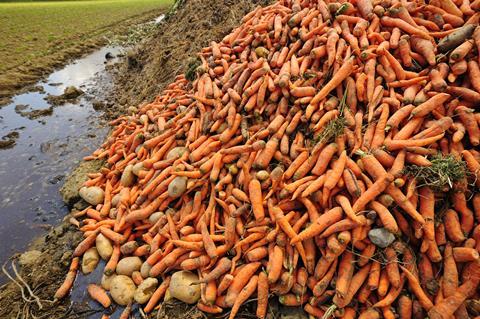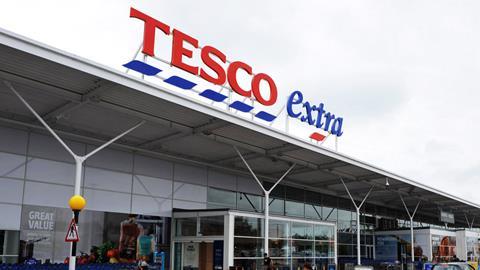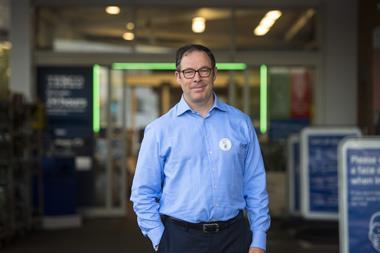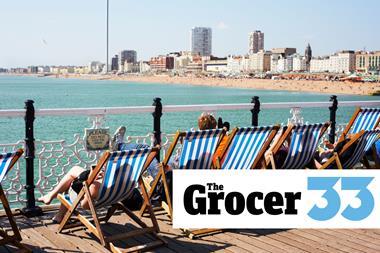We tracked down the food waste firm sacked by Tesco, which has found a new partner and says its ambitions remain ‘unchanged’
The industry’s fight against food waste was rocked last week by revelations that tens of thousands of tonnes of surplus Tesco food waste, previously declared as used for animal feed, had in fact been sent to more environmentally damaging anaerobic digestion plants.
Of all the supermarkets, that it was Tesco came as the biggest shock. The retailer has advocated for food waste transparency, and was the first to come clean on its own figures, in 2013.
While many other retailers have been accused of hiding behind a wall of secrecy, amid government backtracking on promises to get tough, Tesco to date has persuaded 106 of its suppliers to adopt its mantra of ‘Target, Measure, Act’ as part of its pledge to halve food waste in its supply chain by 2030.
However, an audit carried out towards the end of last year resulted in it “terminating” the contract of a food waste processor when it found surplus had been misdirected.
Tesco had previously claimed to have achieved a 45% food waste reduction between 2016/17 and 2022/23, but has had to adjust the figure to 18% as a result of the discovery.
With Tesco having previously reported more than 35,000 tonnes of food waste in the UK last year, such a correction not only sets the supermarket itself back on progress, but the entire industry. So what went wrong? And where does it leave Tesco’s – and the industry’s – food waste battle?
Government food waste expert Wrap excludes food redistributed to people, as animal feed or converted into industrial products from being classed as waste.
For Tesco, that includes food given to staff through its Colleague Shop scheme, donated to FareShare or Olio, or directly to charities via its Community Food Connection scheme – or redirected as animal feed, with the latter the source of the misreporting.

Food waste partner
Tesco is not officially naming the company in question, but it credits its most recent data on the matter to its “animal food partner” RSR (Resource Secure Recovery), also trading as Resource Food and Resource Innovations Group.
RSR says it enables “food manufacturers and retailers to draw more value from every element of surplus products” and reuse the surplus food for “high-quality sustainable animal feed or petfood ingredients, creating a circular economy of reuse”.
In 2021, a year after starting work for Tesco, the company launched a new facility in Rugby, Warwickshire, in response to what it said at the time was “growing customer demand”. It has capacity to process 600 tonnes of surplus food products per week, including from “national food retailers and manufacturers”.
The company’s website says “by reusing and recycling surplus food and its packaging to produce quality recycled materials, animal feed and petfood ingredients, we are giving products a second life”, adding “corporate social responsibility is at the heart of everything we do”.
The Grocer spoke to RSR director Ian Robb, who says he wants to receive a full explanation from Tesco before commenting.
Previously, Tesco had a long-running relationship with its former food waste processor SugaRich, with which it worked from 2012 until 2020.
In 2016 their work was highlighted in a case study by Wrap which focused on how the partners had used more than 20,000 tonnes of bakery surplus to convert into animal feed.
Waste hierarchy
1. Prevent surplus and waste
2. Redistribute surplus food and drink
3. Make animal feed from former food
4. Process surplus food to make biomaterials
5. Recycle – anaerobic digestion and composting
6. Recover waste by landspreading
7. Recover energy from waste
8. Dispose – send to sewer and landfill
Source: Wrap. Actions to be applied in order listed
At the time, Wrap said the collaboration had “developed an end-to-end process to recover surplus bread as a safe, wholesome, nutritious animal feed”.
Sources claim RSR won the contract after promising to increase the proportion of food Tesco sent to animal feed, compared with AD.
Tesco says the uncovering of the figures came after an internal investigation highlighted “processing concerns” late last year. It says it became aware its supplier was sending far less to animal feed and more to AD than previously reported.
It is understood to have immediately instigated a thorough internal review and audit. Tesco claims to have ended its relationship as soon as its concerns were raised, and now has a new supplier in place.
Tesco professes to be confident it has brought in robust actions to get its food waste performance back on track and stresses the issue relates only to food deemed as not fit for human consumption.
The retailer insists its priority is always to get food to humans and insists its flagship redistribution programme with communities and charities is “completely unaffected”.
Diverting surplus to animal feed has been part of the industry’s efforts on food waste for half a century.
However, there is a commercial challenge presented by AD plants, which can be a cheaper way of avoiding landfill.
Both SugaRich and RSR are recorded as members of the Feed Materials Assurance Scheme, which was set up by the Agricultural Industries Confederation and the UK Association for Former Foodstuffs Processors (FFPA) to oversee safety and quality issues around animal feed.
However, unlike SugaRich, RSR is not a member of FFPA.
Read more:
-
Aldi hits 2030 food waste target early
-
Tesco fires contractor as food waste scandal sparks investigation
-
If the food waste scandal could happen to Tesco, it could happen to anyone
-
Food redistribution needs collaboration, not rivalry
Animal feed sector sources say the Tesco revelations once again raise questions over government financial subsidies favouring AD, even though it is lower down the food hierarchy.
“There is a potential incentive for companies to not be transparent,” says one source.
“However, the bigger issue is that unlike in this case involving Tesco, which is obviously extremely concerned about its food waste levels, there are many companies who don’t make such a distinction.
“They just want rid of their surplus and they don’t want to pay subsidies for it going to landfill.”
Tesco’s target
The discovery also raises questions over how Tesco will hit its accelerated target – set by Ken Murphy – to halve its food waste by 2025, five years ahead of the Champions 12.3 and UN target.
Tesco’s group quality, technical and sustainability director Claire Lorains maintains the supermarket’s ambition is “unchanged” and says work is already underway to make sure it can still hit the target.
“We are now reviewing our plans and putting in place the building blocks to return us to where we want to be on waste reduction and over the coming months,” Lorains adds.
Tesco also maintains its support for mandatory food waste reporting is undiminished by the discovery.
In November it emerged environment secretary Steve Barclay was to consider reviving scrapped plans for mandatory food waste reporting – which were first put forward by Michael Gove in 2018 – following pressure from campaign groups, the food industry and The Grocer.
Barclay announced the decision just days after taking over from Thérèse Coffey in a cabinet reshuffle, though there is as yet no timeframe.
While it declined to comment on the specifics of the Tesco case, Wrap too says it is continuing to encourage greater transparency over what happens to surplus food, from government and the industry itself.

“We welcome the news that the government has withdrawn the July 2023 response to the improved food waste reporting consultation,” says a spokesman.
“Wrap is emphasising the importance of our Target, Measure, Act approach.
“Businesses that measure and report food waste through Wrap have made significant progress in reducing both food waste and costs to their businesses.”
Martin Bowman, senior policy and campaigns manager at environmental lobby group Feedback, says the Tesco admission illustrates the need for mandatory reporting to come in urgently.
“This shines a light on the need for greater regulation so that when companies report where their food waste is going, we have effective third-party auditing to check both how much food is being wasted and what destinations it is really going to,” says Bowman.
“But it also highlights how much companies can rely on sending food waste to animal feed to achieve their targets under current definitions of food waste reduction – whereas preventing food waste from arising in the first place should always be the first priority.
“A recent Life Cycle Assessment commissioned by Feedback found that sending food waste to animal feed saves around three times as many emissions as sending it to AD – but preventing food waste arising in the first place saves around nine times more emissions.”
Bowman says it’s vital the government focuses funding towards food waste prevention as a priority over AD.
“Currently AD gate fees for food waste collection are far too low, partly facilitated by government subsidies, meaning it’s very cheap for companies to send food waste to AD.
“The government should investigate policies to raise these gate fees – such as by setting a mandatory minimum gate fee or by setting stricter standards for AD plants such as a mandatory composting step.”
A senior industry source says the fact Tesco is the retailer to declare last week’s discovery raises deeper questions on the industry’s progress.
“They are red hot on the war on food waste. It’s been a huge part of Dave Lewis and now Ken Murphy’s message. This will be a real embarrassment to them but it also begs the question: if it’s happened at Tesco, has it happened anywhere else?”




















No comments yet